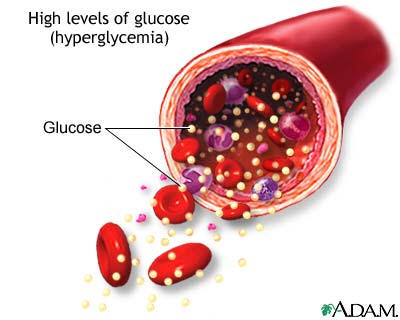|
Introduction:
 Type 1 diabetes, also known as Diabetes Mellitus Type
1, is an autoimmune disease in which the insulin-generating cells of the
pancreas, the beta cells, are attacked and destroyed by the immune
system of an individual. Without the beta cells the individual is unable
to produce insulin which is required for the uptake of glucose into
cells. This in turn leaves elevated of glucose in the blood which exits
the body via the urine. When cells cannot uptake glucose they,
essentially, starve. Since this condition usually occurs in
children it is also more commonly known as "Juvenile Diabetes". The Center for Disease
Control estimates that 5-10% of the United State's population has Type 1
diabetes. In addition, around 151,000 individuals below that age of 20
have the disease. Common symptoms of Type 1 diabetes include: Type 1 diabetes, also known as Diabetes Mellitus Type
1, is an autoimmune disease in which the insulin-generating cells of the
pancreas, the beta cells, are attacked and destroyed by the immune
system of an individual. Without the beta cells the individual is unable
to produce insulin which is required for the uptake of glucose into
cells. This in turn leaves elevated of glucose in the blood which exits
the body via the urine. When cells cannot uptake glucose they,
essentially, starve. Since this condition usually occurs in
children it is also more commonly known as "Juvenile Diabetes". The Center for Disease
Control estimates that 5-10% of the United State's population has Type 1
diabetes. In addition, around 151,000 individuals below that age of 20
have the disease. Common symptoms of Type 1 diabetes include:
Weight loss
Increased thirst
Frequent urination
Extreme hunger
Fatigue
Blurred vision
A cure for this disease is very straight forward in
theory. We just would need a device or tissue construct that acts like a beta cell where it
essentially senses the glucose concentration and releases insulin. Thus,
we need to develop a fully implantable artificial closed-loop pancreas
that meets the following two criteria:
1) Ability to sense glucose
2) Ability to release insulin dependent on glucose
levels
Current Approaches
|